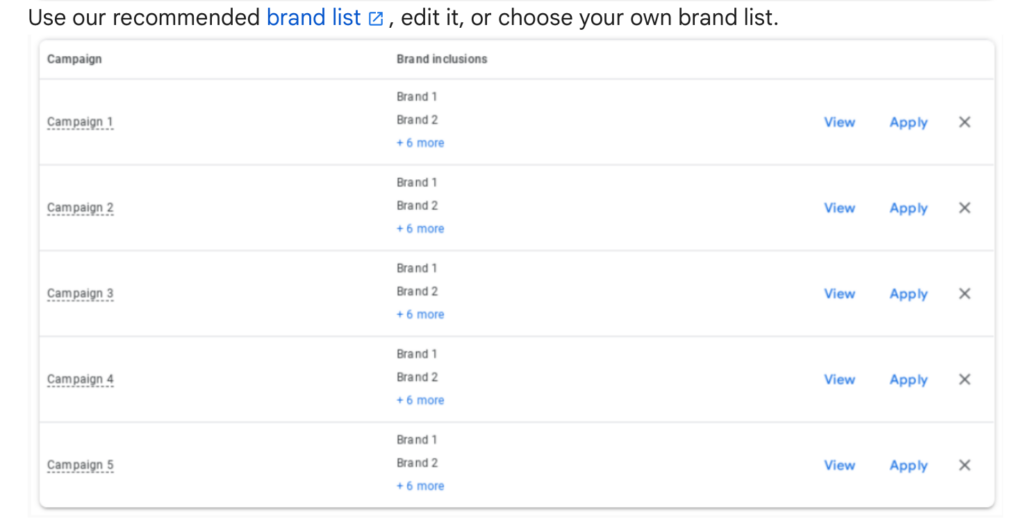Unlike many other Google updates, the ones announced at the end of June for its Ads platform have mostly been well-received across the digital marketing community. In fact they served to reinforce Google’s desire to build up a closer working relationship with SEO agencies and other users of its Google Ads platform.
The changes were announced in a post on X from Ginny Marvin of Ads Liaison. Their overall aim is to improve the performance of ads, and also give advertisers more control over traffic related to their brand. The updates enable advertisers to target more precisely and also spend less time on the repetitive administrative side of account management.
In this article we explain the four recent updates, and also take a look at the main impact of them to advertisers.
The Four Main Changes
The updates relate to the following four areas:
- Misspellings in search terms;
- Misspellings in negative keywords;
- Brand inclusions in board match campaigns;
- Brand exclusions across all search types.
More search terms reported by aggregating misspellings
Google search term reports will now aggregate misspelt search queries along with correctly spelled ones. This is likely to result in visibility of around an additional 9% of search terms that were previously grouped under “Other” due to Google’s privacy thresholds.
This increased data will be shown indirectly by Google grouping keywords into search themes. So instead of having three different versions of the same keyword all with slight misspellings, those three versions are likely to be aggregated with one misspelt keyword with more visible data.
Interestingly, a focus on misspelt keywords are nothing new. Remember the 2010 Snickers campaign “You’re not you when you’re hungry”? It was a paid search campaign focused on the misspelling of over 25,000 words. Snickers and ad agency AMV BBDO worked with Google AdWords to identify and then bid on misspellings of the most commonly searched terms. Every time a Google user misspelt one of these words, they would see a Snickers “You’re not you when you’re hungry” ad, with the campaign being based on the premise that typos are caused when you are hungry.
You can watch more details of the campaign on YouTube here.
The campaign was a tremendous success, with a 15.9% increase in sales in its first year, and a total increase of $376 million after two years.
And now there is no need either to bid on misspelt search terms, or exclude them. Let’s take a look.
Negative keywords to block misspellings
The second recent Google Ads update is related to negative keywords. Negative keywords enable you to exclude search terms from your Google Ad campaigns so that you can focus on only the keywords that are relevant to your customers.
Under the new changes, Google Ads will automatically block misspellings of words added as negative keywords. All you need to do is add the correctly spelled negative keyword and all potential variants of the word will also be blocked.
The example most frequently used by Google Help is YouTube. If you wanted to exclude any reference to YouTube from paid search, all you need to do is include “YouTube” in your negative keywords, and any misspelling that could possibly be YouTube is automatically blocked.
Interestingly, according to Google, there are at least 1.5 million ways to misspell “YouTube” on Google Search? Who knew?!
Brand inclusions in broad match campaigns
Using Google’s broad match campaign setting converts all your existing keywords into broad match rather than exact match, and also ensures that all further keywords use broad match. The new brand inclusion feature enables you then to layer on brand inclusion lists so that your ad is shown for broad match queries related to specified brand names.
This combination of brand inclusions and broad match enable your brand campaigns to benefit from broad match, while at the same time limiting traffic to the brands of your choice. There is also additional help on identifying prospective brands via the new brand inclusions recommendations section on your Recommendations page – see example in the below image from Google Help.

Brand exclusions across all match types
The brand exclusions feature has so far only been available in Performance Max campaigns, but is now being rolled out to all match types and Dynamic Search Ads.
Brand exclusions enable you to prevent your ads from showing on search queries and misspellings for any brand names that you don’t want to match to. This gives you greater choice and control over where your ads are placed, and avoids inadvertent associations with any unwanted brands.
The main impact of the changes
As stated earlier, the updates have been received well within the digital marketing and SEO community. Four of the main advantages are:
-
- They put you in control;
- They harness the power of AI;
- They provide more insights into user behaviour;
- They save you time and money.
You are in control
With the new updates you have more control about when and where your ads show up. You have greater visibility and control over which traffic you do and don’t want to reach. Brand inclusions enables you to benefit from broad match reach whilst only visible to certain brand traffic. And brand exclusions enable you not to show on certain brand traffic.
All this means that you can do much more precise targeting to ensure that your ads get in front of the people to whom they are the most relevant, hopefully with improved results.
Broad match is harnessing the power of AI
Google is continually improving AI-powered broad match. The result of this will be increasingly to help you reach customers who want to find you no matter how they are searching. In the last six months alone, AI-powered improvements improved broad match performance by 10% for advertisers using Smart Bidding.
More insights into user behaviour
The updates provide more comprehensive insights into how users search. According to Search Engine Land, 20% of search queries contain typos or misspellings. And whilst these misspellings will now be overcome by the updates, they are also more visible than before. So it is worth analysing them to improve your understanding of user behaviour and overall keyword performance and see the level to which misspellings are driving traffic.
Time and money savings
Now that all misspellings of negative keywords are going to be blocked, this can save a lot of time and manual effort in creating negative keyword lists yourself. It can therefore streamline management of your ad campaigns, and free up time for more strategic tasks.
We hope that this article has helped you to become more familiar with Google’s recent Ad Platform updates, and to understand how they can work to your benefit. For a reminder of how Google Ads work, check out our article So . . . How do Google Ads actually work?
Do keep checking back with us here at Xcite for more insights into the world of SEO and digital marketing. And for recent examples of how we have used Google Ads as part of our digital marketing strategy , take a browse through our Case Studies page here.
